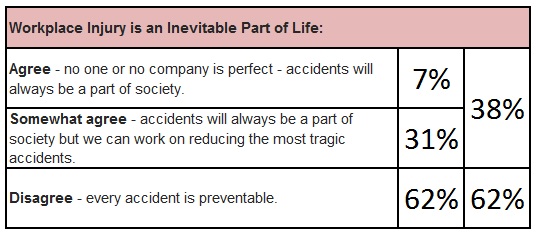I read multiple blogs, newsletters, e-mails and magazines each week related to safety. One I look forward to each month is by Matt Forck. Mr. Forck has a way to relate a real life situation to safety. His e-mail this month I found very moving. I cut and pasted his e-mail story below – it’s called PLEASE SANTA:
“They are a traditional and rather successful small town American family. Mom and Dad had raised five boys and four girls, now all adults with families of their own. Dad was an electrician, and started his own business back in the late ’50s. All of the boys grew up working in the business, first as grunts, then apprentices. Four of the five earned their journey electrician card. Today, three still work for ‘the business.’ Of the two that do not work for the family, one started his own business in a near-by town and the other recently passed away. It was the death of one of the brothers that made this Thanksgiving holiday a little harder than most.
Thanksgiving, as with all of the major holidays, was a time for the family to come together at the farm and celebrate. And, Thanksgiving was a special treat for the children as Santa Claus always made a stop near the end of the day. Each child would sit on Santa’s lap and reveal the wishes and dreams they held for the next Holiday.
So, as the fall sun slowly sank upon the farm the children eagerly awaited Santa. They were restless and eager and finally, when it seemed that he would never arrive, he did…appearing in the doorway out of nowhere sounding off a loud “Ho Ho Ho, Merry Christmas.” The entire family gathered around. Santa seated himself in the same kitchen chair that he had last year and for many years past. There, one by one, he welcomed each child to his lap…all twenty-seven of them.
When it was Ben’s turn Santa seemed a little uneasy, for it was Ben, age five, who had lost his dad earlier in the year. Ben was shy of the big bearded man dressed in red and talked slowly and quietly. He told Santa that he wanted a Spiderman and backpack. He said he wanted a Shrek DVD…his voice trailed off and he finally looked into Santa’s giving brown eyes and said, “Please…Please Santa, I just want my dad back…”
The room fell silent. For a long moment the only sound was the drip of the kitchen sink. Ben’s mother finally pulled him from Santa’s lap and hugged him tight. Santa, with over a dozen children waiting in line said, “Ho, Ho, I’ll be right back” As he stepped quickly for the door he uttered something about needing to check the reindeer.
Once outside, Santa pulled off the white beard and fell to his knees. He wiped his tears on the sleeve of his red velvet jacket. By day Santa was Uncle Jack; he was a brother and co-worker to Ben’s father. All that Ben knew was that his father was killed in an accident. But Santa knew the truth. He and his dad were in a hurry. They cut some corners and broke some safety rules; but it was okay, it was no big deal. After all, they had done it before and wouldn’t be hurt. But, this time it was different and things went wrong. Ben’s dad was killed and Jack watched it happen. He could have stopped it…he should have stopped it, if he had only stopped it.
Santa couldn’t give Ben his father back. It was too late. There was nothing he, or even the real Santa, could do now. That was the horrible truth…Santa wiped his tears, put his beard back on his cheeks, stood and walked back into the house. “Please Santa” would ring in his ears forever…
Matt Forck, CSP & JLW is a noted safety speaker addressing today’s most urgent topics including culture, accountability, leadership and employee engagement. Sign up for Matt’s FREE safety resources at http://www.safestrat.com.”
We all make choices – choices to be safe and choices to break the rules. In the PLEASE SANTA story – two men who knew better made the choice to cut corners and break the rules. I never want to hear a story like PLEASE SANTA in real life – what about you?
STAY SAFE! ** Jeff ** 214-215-2434

